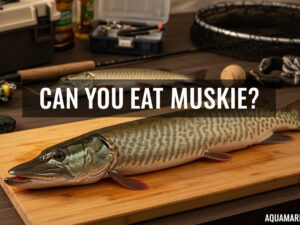The story of tuna endangerment represents one of marine conservation's most dramatic tales—from catastrophic population crashes exceeding 90% to inspiring recovery successes that offer hope for ocean ecosystems worldwide. Atlantic bluefin tuna, once teetering on the brink of extinction, has rebounded from Endangered to Least Concern status as of 2025, proving that coordinated international efforts can save even the most threatened marine species.
This comprehensive guide explores the unfortunate history that brought these ocean giants to near-extinction, examines current tuna endangered status across different species, and celebrates remarkable conservation victories that continue unfolding today. You'll discover where these magnificent predators are found, what threatens their survival, and why their recovery matters for marine ecosystems globally.
The Catastrophic Decline: When Ocean Giants Nearly Disappeared
The Scale of Devastation
The numbers tell a sobering story of systematic overexploitation. Bluefin tuna population decline reached unprecedented levels during the late 20th century, with the International Commission for the Conservation of Atlantic Tunas confirming in 2009 that Atlantic bluefin stocks had plummeted by 72% in the Eastern Atlantic and 82% in the Western Atlantic over 40 years.
Pacific bluefin tuna faced even more dire circumstances. By 2016, scientists estimated that only 2.6 percent of the original population remained—a staggering 97.4% decline that left fewer than 1.6 million fish in the entire Pacific Ocean.
The breeding population statistics reveal the true scope of this ecological disaster. Western Atlantic bluefin spawning stock biomass crashed from 49,482 metric tons in 1970 to just 8,693 metric tons by 2007. Meanwhile, catches of bluefin tuna declined 93 percent between 1963 and 2004 across all major fishing grounds.
The Perfect Storm of Exploitation
Several factors converged to create this conservation crisis:
The Sushi Market Explosion transformed tuna from unwanted bycatch into liquid gold. Japanese demand for high-grade sashimi and sushi drove prices to astronomical heights—a single Atlantic bluefin sold for $247,000 at Tokyo's Tsukiji market in 2008, with some Pacific specimens fetching over $1.75 million.
Industrial Fishing Revolution replaced traditional methods with high-tech purse seines, longlines, and fish-finding technology. Vessels could now locate and capture entire schools with devastating efficiency. In the 1990s, an estimated 50,000 to 61,000 tonnes of bluefin tuna were caught annually in the East Atlantic and Mediterranean alone.
Regulatory Failures compounded the problem. The International Commission for the Conservation of Atlantic Tunas repeatedly ignored its own scientists' recommendations, earning criticism as an "international disgrace" for setting quotas far above sustainable levels.
Understanding Global Tuna Endangered Status
Current Conservation Classifications
The IUCN Red List provides critical insights into tuna endangered status across different species:
Atlantic Bluefin Tuna (Thunnus thynnus): Moved from Endangered to Least Concern in September 2021, representing one of conservation's greatest success stories.
Pacific Bluefin Tuna (Thunnus orientalis): Currently listed as Near Threatened, improved from Vulnerable status despite remaining at less than 5% of original biomass.
Southern Bluefin Tuna (Thunnus maccoyii): Advanced from Critically Endangered to Endangered, showing gradual recovery signs.
Yellowfin Tuna (Thunnus albacares): Upgraded from Near Threatened to Least Concern globally, though regional populations vary significantly.
The Smallest Tuna Species and Their Recovery
Among the smallest tuna species recovering despite massive conservation challenges, blackfin tuna (Thunnus atlanticus) deserves special recognition. Maxing out at roughly 40 inches and 45 pounds, blackfin represents the most diminutive true tuna species. Unlike their giant bluefin relatives, these smaller tuna have demonstrated remarkable resilience, maintaining stable populations throughout the Atlantic due to their rapid reproduction rates and lower commercial value.
The sturgeon conservation efforts documented on marine conservation platforms show how smaller, less commercially targeted species often fare better than their high-value cousins.
Geographic Distribution: Where Are Bluefin Tuna Found?
Atlantic Range and Migration Patterns
Where are bluefin tuna found spans vast oceanic territories across temperate and subtropical waters. Atlantic bluefin inhabit both western and eastern Atlantic basins, with distinct populations maintaining separate spawning grounds.
The Eastern Atlantic population ranges from Norway to the Canary Islands, with the Mediterranean Sea serving as their primary spawning area. These fish undertake extensive migrations, crossing the Atlantic in less than 60 days during their lifetime journeys.
Western Atlantic bluefin occupy waters from Labrador, Canada, to northern Brazil, spawning exclusively in the Gulf of Mexico. This population faces greater conservation challenges, remaining at less than 15% of historical biomass levels.
Pacific Distribution
Pacific bluefin demonstrate equally impressive range, inhabiting waters from East Asia to North America's western coast. They spawn in the northwestern Philippine Sea and Sea of Japan, with some individuals making transpacific migrations exceeding 5,000 miles.
These magnificent creatures can be found from surface waters down to 550 meters deep, adapting to temperatures ranging from 2°C to 30°C across their vast habitat range.
Prime Fishing Locations
Where is bluefin tuna caught varies by species and season. Major commercial fishing grounds include:
- Mediterranean Sea: The world's most important bluefin fishery, accounting for the majority of Atlantic catches
- North Atlantic: From Nova Scotia's productive waters to New England's Stellwagen Bank
- Pacific Coast: California to Mexico, with peak seasons from May through October
- North Pacific: Japanese waters and the broader western Pacific feeding grounds
Understanding these distribution patterns has proven crucial for developing effective conservation strategies, as sustainable marine energy projects must consider wildlife migration routes.
The Marine Food Web: What Animals Eat Bluefin Tuna?
Natural Predators Across Life Stages
What animals eat bluefin tuna depends largely on their life stage and size. These apex predators face different threats throughout their development:
Larval Stage: Newly hatched bluefin are vulnerable to jellyfish, planktivorous fish, and even cannibalism from their own species. Numbers drop dramatically during this critical period.
Juvenile Stage: Young tuna face predation from larger fish, seabirds, and smaller sharks. Bluefish and various seabirds actively hunt juvenile bluefin near coastal areas.
Adult Stage: Mature bluefin have few natural enemies due to their size and speed. Only the largest predators pose threats: killer whales (Orcinus orca), great white sharks (Carcharodon carcharias), mako sharks (Isurus oxyrinchus), and large billfish species.
Adult Atlantic bluefin can reach speeds of 44 mph and dive to depths exceeding 3,000 feet, evolutionary adaptations that help them escape most predators. Their warm-blooded physiology gives them significant advantages in cold water hunting scenarios.
Humans: The Ultimate Predator
Unfortunately, humans represent the most significant predator threat. Commercial fishing operations account for the vast majority of adult tuna mortality, far exceeding natural predation pressure across all life stages.
The parallels between tuna conservation and other marine species protection efforts, such as understanding mercury contamination in marine mammals, highlight the interconnected nature of ocean health challenges.
Ecological Importance: Why Are Bluefin Tuna Important?
Apex Predator Role
Why are bluefin tuna important extends far beyond their commercial value. These magnificent predators serve critical ecological functions that maintain marine ecosystem balance:
Population Control: Bluefin consume vast quantities of smaller fish, including herring, mackerel, sardines, and squid. This predation pressure keeps prey species populations healthy and prevents any single species from dominating the ecosystem.
Nutrient Distribution: As highly migratory species, tuna transport nutrients across ocean basins. Their feeding in nutrient-rich areas and excretion in different locations helps distribute essential minerals and organic compounds throughout marine environments.
Ocean Mixing: Large bluefin diving and surfacing behaviors physically mix water columns, bringing deep-water nutrients toward the surface where they support phytoplankton growth and primary productivity.
Economic and Cultural Significance
Beyond ecological roles, bluefin tuna support coastal communities worldwide through:
- Sustainable Fisheries: Properly managed tuna stocks provide long-term employment for fishing communities
- Tourism Revenue: Sport fishing for bluefin generates millions in economic activity annually
- Cultural Heritage: Many coastal cultures have developed traditional relationships with tuna spanning centuries
The recovery success of bluefin populations demonstrates how marine conservation efforts can benefit both ecosystems and human communities when properly implemented.
Conservation Success Stories: From the Brink of Extinction
Atlantic Bluefin Recovery
The Atlantic bluefin recovery represents marine conservation at its finest. Coordinated international efforts beginning in the early 2000s implemented:
Strict Quotas: Total allowable catches dropped from over 50,000 tonnes annually to carefully managed limits based on scientific advice.
Enhanced Monitoring: Electronic monitoring systems on fishing vessels, mandatory observer coverage, and improved catch reporting created transparency previously lacking in the fishery.
Spawning Ground Protection: Critical breeding areas received enhanced protection, with some regions completely closed to fishing during spawning seasons.
Size Restrictions: Minimum size limits increased from 10kg to 30kg, allowing more fish to reach reproductive maturity before harvest.
These measures yielded remarkable results. The Eastern Atlantic population has increased by at least 22% over four decades, leading to the species' upgrade from Endangered to Least Concern status in 2021.
Pacific Bluefin Comeback
Pacific bluefin tuna recovery has exceeded all expectations, reaching rebuilding targets a full decade ahead of schedule. International cooperation through the Inter-American Tropical Tuna Commission and Western Central Pacific Fisheries Commission created unified management across the species' entire range.
By 2022, spawning bluefin reached 23.2% of potential unfished stock—the first time the population surpassed maximum sustainable yield levels since assessments began. This recovery demonstrates the species' remarkable resilience when fishing pressure is reduced.
Ongoing Challenges and Regional Variations
Despite overall success, significant challenges remain. The Western Atlantic bluefin population, which spawns in the Gulf of Mexico, continues struggling at less than 5% of original biomass. Environmental threats like the 2010 Deepwater Horizon oil spill occurred during peak spawning season, potentially impacting long-term population recovery.
Regional management continues evolving, with recent adoption of adaptive management systems that automatically adjust quotas based on stock status, removing political pressure from scientific decision-making.
Current Threats and Conservation Priorities
Climate Change Impacts
Rising ocean temperatures are shifting tuna distribution patterns, potentially affecting spawning success and prey availability. Acidification threatens the entire marine food web that supports tuna populations.
Illegal Fishing Persistence
Despite improved regulation, illegal, unreported, and unregulated fishing continues plaguing tuna stocks. Enhanced monitoring technologies and international cooperation remain essential for addressing this ongoing threat.
Bycatch Concerns
Industrial fishing operations targeting other species frequently capture juvenile tuna as bycatch before they can reproduce, undermining population recovery efforts.
Looking Forward: Sustainable Tuna Management
Innovation in Monitoring
Electronic monitoring systems, satellite tracking, and DNA analysis are revolutionizing fisheries management. These technologies provide real-time data essential for adaptive management approaches.
Aquaculture Development
Sustainable tuna farming techniques are advancing, though challenges remain in developing closed-cycle breeding that doesn't rely on wild-caught juveniles.
Consumer Awareness
Growing consumer demand for sustainably sourced seafood is creating market incentives for responsible fishing practices. Certification programs like Marine Stewardship Council standards help consumers make informed choices.
The remarkable recovery of several tuna species proves that even severely depleted marine populations can rebound with proper management and international cooperation.
Key Takeaways: Hope for Ocean Conservation
The unfortunate history of endangered tuna ultimately tells a story of hope rather than despair. From population crashes exceeding 90% to remarkable recoveries that exceeded scientific projections, tuna conservation demonstrates what becomes possible when nations cooperate based on sound science.
Atlantic bluefin tuna's journey from Endangered to Least Concern status in just two decades offers a blueprint for saving other threatened marine species. Pacific bluefin reaching rebuilding targets a decade early proves that ocean ecosystems retain incredible resilience when given the chance to recover.
These conservation victories remind us that the ocean's magnificent predators—from the largest bluefin to the smallest blackfin—can continue thriving for future generations when we commit to sustainable management practices.
The future of our oceans depends on applying lessons learned from tuna recovery to other threatened species. By supporting sustainable fisheries, understanding marine ecosystem conservation, and maintaining the political will for long-term management, we can ensure that the unfortunate history of endangered tuna becomes a story of triumph over adversity.
Ready to learn more about marine conservation efforts? Explore our comprehensive guides on endangered marine species and discover how you can support ocean conservation initiatives in your community.



